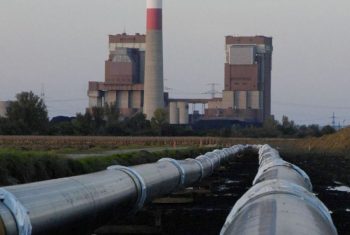
 November 2014 • Analysis •
November 2014 • Analysis •
This paper looks at the recent reconfiguration on the Russian gas exports market. With the liberalization of LNG exports introduced in late 2013 and the contracts signed with Chinese importers in May 2014, the positions of Gazprom, which had long been holding a monopoly in the sphere, have been seriously challenged. The main challengers to Gazprom seem to be Russia’s two major independent gas suppliers – Rosneft and Novatek –, which not only gained access to foreign clients but have also strengthened their positions on the domestic market. By bringing into focus the strategies of the key market players as well as by analyzing the current balance of power at the top decision-making level, the author seeks to explain the main drivers of the ongoing reforms.
Recent moves regarding regulation of Russian energy market have cast doubt on Gazprom’s status as the country’s sole exporter of natural gas. Late in 2013, the company’s monopoly was questioned for the first time when liberalization of liquefied natural gas (LNG) exports allowed the so-called independent gas suppliers (IGS) – Rosneft, Novatek –, to start selling gas abroad.
Russia is the world’s second largest gas producer and the main gas supplier to EU countries. Up until recently the only company with the right to export gas from Russia was Gazprom – a corporation founded in 1989 as a result of transformation of the Soviet Ministry of Gas Industry. In addition to holding a monopoly on gas export, Gazprom has also been dominating the domestic market.
However, today Gazprom’s monopoly seems to be challenged. First of all, over the last few years we observed a constant contraction of Gazprom’s share on the domestic market: although the company remains a leader, its market share decreased from 86% in 2000 to 73,7% in 2012, creating room for other stakeholders (Rosneft and Novatek, most notably).
Second, the LNG exports policy liberalization introduced in November 2013 has undermined the very basis of the Russian gas market – Gazprom’s steadfast position as a gas-export monopolist.
Third, a contract signed with China as well as a package of measures proposed by Rosneft’s CEO Igor Sechin during the last session of the Presidential Commission on the fuel and energy sector in June 2014 could be a sign of an upcoming gas exports de-monopolization: today the pipeline network remains in Gazprom’s sole proprietorship, but the IGS seem to be contesting this state of affairs.
All in all, what one observes today could be a major transformation as far as the Russian energy market is concerned. However, Gazprom, on one hand, and Rosneft and Novatek, on the other, don’t seem to be competing with the same intensity. Rather, Gazprom is not fiercely defending its positions as a monopolist – all its actions are more retaliatory than pro-active.
Therefore, one could suggest that the changes in Russia’s gas exports policy are primarily driven (or at least, supported) by the Kremlin. The scheme and the objectives of such a “liberalization” are not clearly defined, though.
By advancing a hypothesis that the “de-monopolization” does not really aim at giving more power to the independent gas producers and suppliers, this paper will look more in detail at the changes implemented in order to cast light on gas-export liberalization “à la russe”.
